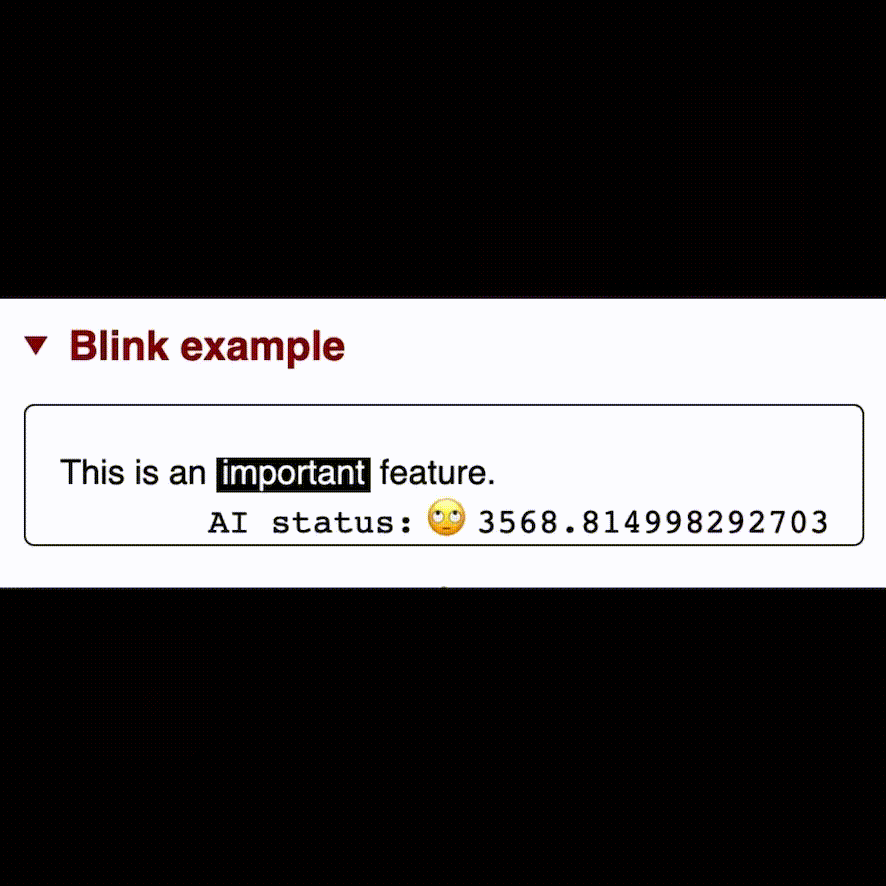News
W3C re-introduces popular BLINK feature
1 April 2021 | Archive
 [At the occasion of April Fools’ Day] W3C today re-introduced the popular BLINK feature as part of the open web platform, thus mitigating the community critique about the removal of the early version.
[At the occasion of April Fools’ Day] W3C today re-introduced the popular BLINK feature as part of the open web platform, thus mitigating the community critique about the removal of the early version.
Using state-of-the-art W3C technology, Web authors now can be sure to get the readers’ attention that their important information deserves, and web users to never miss important information again.
The new feature gives back full editing control to web authors while ensuring an inclusive user experience for all. More information is available in the press release.
Updated Resource: Curricula on Web Accessibility
31 March 2021 | Archive
The Accessibility Education and Outreach Working Group (EOWG) has published new Developer Modules in the Curricula on Web Accessibility. This curricula provides a framework for creating courses on digital accessibility, for including accessibility in other courses, and for reviewing existing and proposed courses. The March 2021 publication includes: updated guidance in the Curricula overview page, updated Foundation Modules, and new Developer Modules. The new modules focus on accessible markup and coding techniques, primarily for teaching front-end developers. The next modules will cover designing and authoring accessible digital content.
XSL Transformations (XSLT) Version 2.0 (Second Edition) is a W3C Recommendation
30 March 2021 | Archive
W3C has published XSL Transformations (XSLT) Version 2.0 (Second Edition) as a W3C Recommendation. This specification defines the syntax and semantics of XSLT 2.0, a language for transforming XML documents into other XML documents. This Second Edition incorporates errata and clarifications, without new features.
W3C has published a 3.0 version of the XSLT language as a W3C Recommendation, on 8 June 2017, which includes powerful additions, so as to enable transformations to be performed in streaming mode, where neither the source document nor the result document is ever held in memory in its entirety. Another important aim of 3.0 was to improve the modularity of large stylesheets, allowing stylesheets to be developed from independently-developed components with a high level of software engineering robustness (packages).
